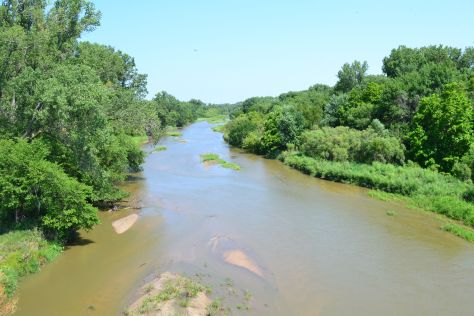 Last Thursday, July 24, I found myself traveling in Pawneeland. Near Scandia, Kansas I stopped at a bridge overlooking the Dirty Water River (Republican River). A lively flock of swallows kept up a swarming chatter as I took a few photos.
Last Thursday, July 24, I found myself traveling in Pawneeland. Near Scandia, Kansas I stopped at a bridge overlooking the Dirty Water River (Republican River). A lively flock of swallows kept up a swarming chatter as I took a few photos.
I continued on my way among gently rolling ridges, vast cornfields, and tree-lined waterways, and I soon stood before the door of the Pawnee Indian Museum. The museum sits at the edge of a plain, perched above a winding sylvan curve of the Dirty Water River. To the east and north a distant horizon fades into green.
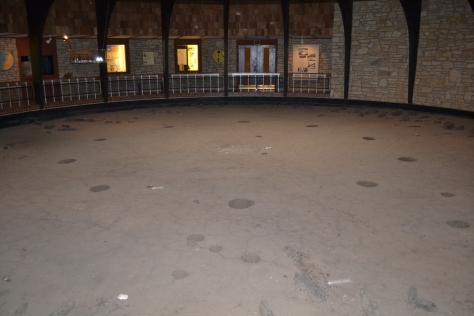 Stepping into the museum I met curator Richard Gould. He showed me some newly installed Catlin prints and other exhibits. The museum encircles an earthlodge floor excavated by Tom Witty during the 1960s; Tom got the State of Kansas to build the museum around the house floor.
Stepping into the museum I met curator Richard Gould. He showed me some newly installed Catlin prints and other exhibits. The museum encircles an earthlodge floor excavated by Tom Witty during the 1960s; Tom got the State of Kansas to build the museum around the house floor.
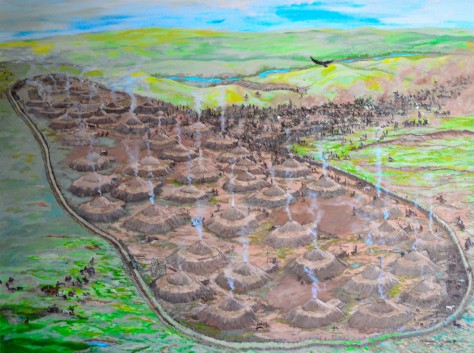 Richard showed me this artist’s rendition of the Pawnee community that once stood here – he pointed out that the earthlodges are not depicted very accurately. This late 18th century city is known today as the Kansas Monument site (14RP1). I don’t know what the Pawnees called the city that once stood here, but one oral tradition speaks of a community at the bend of the Dirty Water River. I think this is that city; so I call it Riverbend City.
Richard showed me this artist’s rendition of the Pawnee community that once stood here – he pointed out that the earthlodges are not depicted very accurately. This late 18th century city is known today as the Kansas Monument site (14RP1). I don’t know what the Pawnees called the city that once stood here, but one oral tradition speaks of a community at the bend of the Dirty Water River. I think this is that city; so I call it Riverbend City.
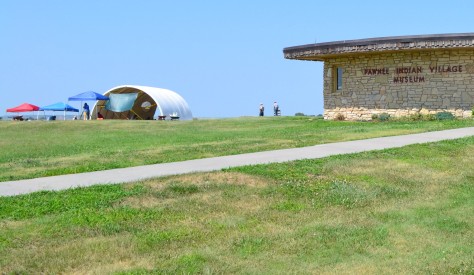 The Department of Anthropology at the University of Kansas has sponsored several archaeology field schools for students in recent years. This year they invited me to visit, and I found them excavating an earthlodge floor under these tents.
The Department of Anthropology at the University of Kansas has sponsored several archaeology field schools for students in recent years. This year they invited me to visit, and I found them excavating an earthlodge floor under these tents.
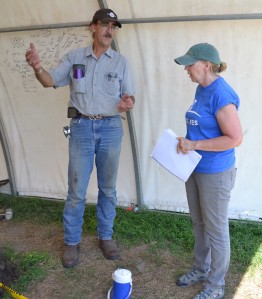 The KU field school this year is led by Donna Roper, Jack Hofman, and Mary Adair. Here Jack and Mary discuss the excavation project. It was a windy afternoon in Pawneeland, sunny and warm.
The KU field school this year is led by Donna Roper, Jack Hofman, and Mary Adair. Here Jack and Mary discuss the excavation project. It was a windy afternoon in Pawneeland, sunny and warm.
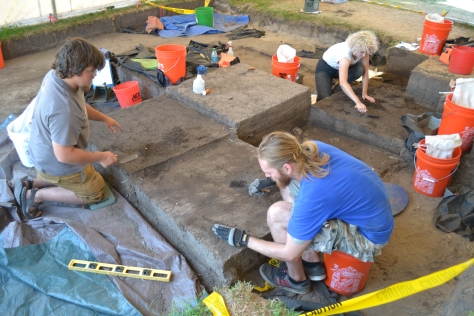 The students carefully remove thin layers of dirt in defined blocks to reveal items in the soil and show patterns of discoloration – postholes and other features.
The students carefully remove thin layers of dirt in defined blocks to reveal items in the soil and show patterns of discoloration – postholes and other features.
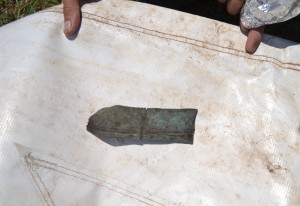 One student, Brendon Asher, showed me a piece of metal found here. It is either copper or bronze. It long ago came to this Pawnee city in the hands of a trader, probably from St. Louis. It started out as a metal pot, but the Pawnees refashioned this piece into a serrated knife.
One student, Brendon Asher, showed me a piece of metal found here. It is either copper or bronze. It long ago came to this Pawnee city in the hands of a trader, probably from St. Louis. It started out as a metal pot, but the Pawnees refashioned this piece into a serrated knife.
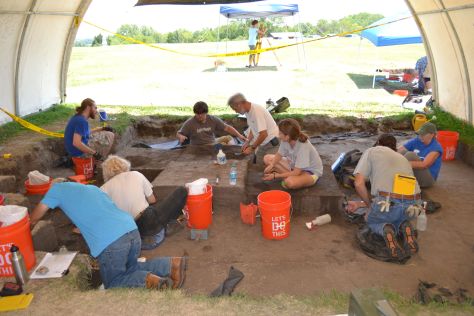 In the afternoon I talked to the KU archaeology field school about the history of this site. I believe it was a Little Kitkahahki city. A number of Pawnees today can trace their ancestry back to a man named Sharp and a woman named Ska-wah-hah. They were probably born at Riverbend City during the final years of Pawnee residency here. Their children include ancestors of the Morgan family, Rice family, Curly Chief family, Horse Chief family, Kitkahahki George family, and other Pawnees. It was interesting to walk in this vanished city, to feel the wind and sunlight, and to peer into the earth at the world as it once was, long ago in Pawneeland.
In the afternoon I talked to the KU archaeology field school about the history of this site. I believe it was a Little Kitkahahki city. A number of Pawnees today can trace their ancestry back to a man named Sharp and a woman named Ska-wah-hah. They were probably born at Riverbend City during the final years of Pawnee residency here. Their children include ancestors of the Morgan family, Rice family, Curly Chief family, Horse Chief family, Kitkahahki George family, and other Pawnees. It was interesting to walk in this vanished city, to feel the wind and sunlight, and to peer into the earth at the world as it once was, long ago in Pawneeland.

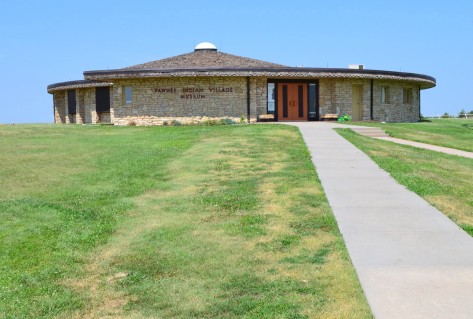
Thanks Roger, for sharing this with all of us. There was “trouble in River(bend) City” a long time ago, that brought the community to an end. It is great that University of Kansas and the State of Nebraska is doing such good work to more fully understand how the people lived and what may have happened to them.
Thanks for stopping in and reading about my adventures in Pawneeland, Katy!